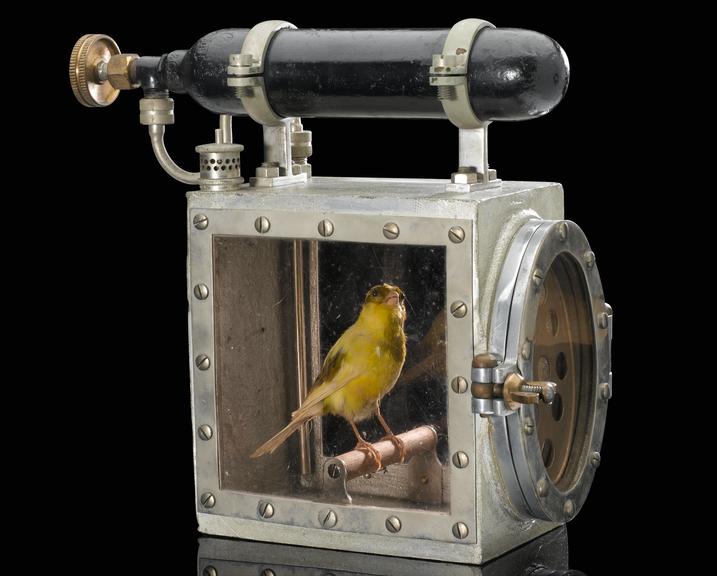via The National Archives Blog by Jane Flood

In June 1940, following a scrambled evacuation of troops at Dunkirk, the Second World War was brought home to Britain. As Hitler’s Luftwaffe initiated its bombing campaign on the RAF in the Battle of Britain, destroying some of our major cities in the Blitz, the threat of invasion grew daily. A secondary defence force of men was set up at home called ‘The Local Defence Volunteers’… later to become known as the Home Guard.
Continue reading
==============================
via Interesting Literature
‘The Lotos-Eaters’ is quite a long poem, but we’ve included it below in its entirety before offering some words of analysis. ‘The Lotos-Eaters’ was published in Tennyson’s 1832 collection, which appeared when he was still in his early twenties.
Continue reading
Definitely not one of my favourites as a poet, nor do I enjoy this poem.
==============================
via the Big Think blog by Brandon A Weber
It turns out, that tattoo ink can travel throughout your body and settle in lymph nodes.
In the slightly macabre experiment to find out where tattoo ink travels to in the body, French and German researchers recently used synchrotron X-ray fluorescence in four "inked" human cadavers — as well as one without. The results of their 2017 study? Some of the tattoo ink apparently settled in lymph nodes.
Continue reading
==============================
Our floodlit society has made sleep deprivation a lifestyle. But we know more than ever about how we rest—and how it keeps us healthy.
via Arts & Letters Daily: Michael Finkel in the National Geographic
Nearly every night of our lives, we undergo a startling metamorphosis.
Our brain profoundly alters its behavior and purpose, dimming our consciousness. For a while, we become almost entirely paralyzed. We can’t even shiver. Our eyes, however, periodically dart about behind closed lids as if seeing, and the tiny muscles in our middle ear, even in silence, move as though hearing. We are sexually stimulated, men and women both, repeatedly. We sometimes believe we can fly. We approach the frontiers of death. We sleep.
Around 350 B.C., Aristotle wrote an essay, “On Sleep and Sleeplessness,” wondering just what we were doing and why. For the next 2,300 years no one had a good answer. In 1924 German psychiatrist Hans Berger invented the electroencephalograph, which records electrical activity in the brain, and the study of sleep shifted from philosophy to science. It’s only in the past few decades, though, as imaging machines have allowed ever deeper glimpses of the brain’s inner workings, that we’ve approached a convincing answer to Aristotle.
Continue reading
==============================
via About History by Alcibiades

The Mercenary War, or the Libyan War, was fought in Carthage between 240-238 BC and represents the struggle of the Carthaginian authorities with their own mutinous mercenary army and the Libyans who joined them.
The revolt began immediately after the end of the First Punic War. The costs of war and the indemnity paid to Rome led to Carthage unable to pay off 20,000 mercenaries. Under the terms of the peace treaty between Carthage and Rome, concluded in 241 BC, the Carthaginians were to withdraw all the troops from Sicily.
Continue reading
==============================
via the OUP blog by Steven Filippi

Ernest Hemingway’s typewriter in his studio, Ernest Hemingway House, Key West, Florida, USA. Acroterion, CC BY-SA 3.0 via Wikimedia Commons
The first machine known as the typewriter was patented on 23rd June 1868, by printer and journalist Christopher Latham Sholes of Wisconsin. Though it was not the first personal printing machine attempted—a patent was granted to Englishman Henry Mill in 1714, yet no machine appears to have been built—Sholes’ invention was the first to be practical enough for mass production and use by the general public. With the help of machinist Samuel W. Soulé and fellow inventor Carlos Glidden, Sholes had spent the summer of 1867 developing his machine, and by September of that year was able to type his name in all capital letters.
Continue reading
==============================
via UNESCO Courier by Vanessa Evers

The residents of the Tsukui retirement home in Kawasaki, Japan, do some gymnastics with their coach, Pepper (2015)
For an artificial agent to assume a real social role and establish a meaningful relationship with a human, it would need to have a psychological, cultural, social and emotional profile. Current machine learning methods do not allow for such a development. Tomorrow's robots will be our humble assistants, nothing more.
Continue reading
==============================
via Interesting Literature
Are these H. D.’s greatest poems?
Hilda Doolittle, or H. D. as she chose to publish, was labelled ‘the perfect imagist’ by various critics and reviewers. The following five poems show why H. D. was the leading light of the short-lived imagist movement, as her poetry offers concise and vivid images behind which lurk whole storms of restrained emotion. Here’s a selection of H. D.’s finest poems, both from her imagist period and from her later work.
Continue reading
==============================
via Boing Boing by Cory Doctorow

This Canary Resuscitator was manufactured in the 1920s by Siebe Gorman and Co.; it was carried by miners to revive the canaries that were used from the late 19th century until 1987(!) as early-warning signals for potentially lethal gas leaks.
Continue reading
==============================
via About History by Alcibiades

Selim I Yavuz (the Grim) was the 9th Sultan of the Ottoman Empire. He is [sic] born in 1470 in the city of Amasya, the youngest son of Sultan Bayezid II and Gulbahar Sultana. Bayazid II had eight sons; however, five of them died during his reign, leaving only Ahmed, Korkud and Selim. Selim was appointed governor of Trabzon in 1481 when his father took the throne. He stayed there for 29 years, until 1510.
Continue reading
No comments:
Post a Comment